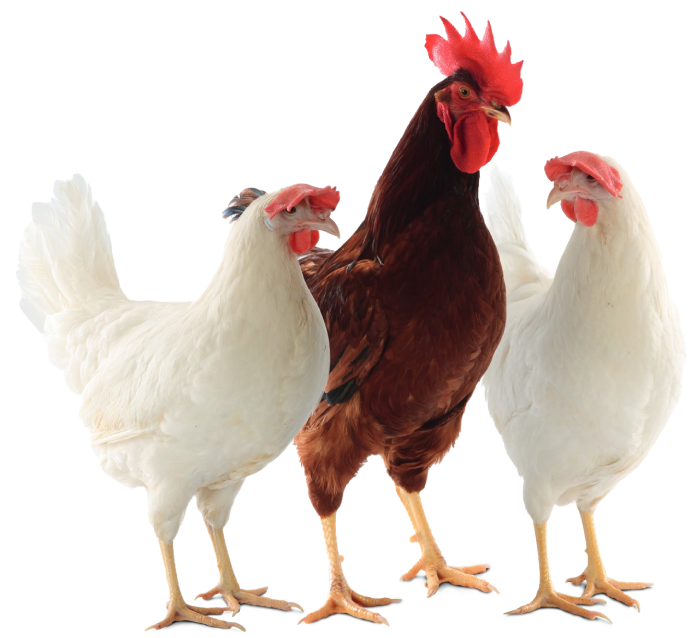Water is considered as the most important, but also as the most often forgotten nutrient in poultry farming. The supply of livestock with fresh, high-quality water is one of the most important basics of modern animal husbandry
Despite the great importance of water and the water supply for the livestock, this area is often neglected and underestimated. Thereby, poor and inadequate water quality and water supply for poultry may cause adverse effect on the health and performance of birds. Anyhow, the high genetic potential of the birds can only be utilized by feeding them with a fullvalue nutritious diet which surely includes also good quality and fresh drinking water. It is not for nothing that water is considered in many cultures as the “source of life“.

Some facts about drinking water for humans; Source: http://www.wateraid.org
Important functions of water in animal organism
› In fact all chemical procedures in body proceed in water. Water is also the means of transport for nutrients and oxygen to cells and carries out the metabolism waste products away from the cells. › Water is essential for feed intake and digestion procedures. › Water regulates the body temperature. › Significant parts of animal body, its organs and tissues such as the brain and the muscles are made up in large amount of water. That is why the good quality and fresh drinking water must be always available for birds.
Water quality: What do we have to keep an eye on?
The drinking water for poultry should be the same quality as the drinking water for human use that means clean, colorless, odorless, tasteless and free of pathogens and hazardous ingredients. Although the drinking water regulations for human does not necessarily also apply to drinking water for poultry or in general livestock, it should still basically meet the requirements of the drinking water ordinance. Table 1 shows recommended ranges for a suitable drinking water for laying hens. Exceeding these limits may cause an adverse effect on animal health and performance. In addition, the effectiveness of medications and vaccines that are administered via the drinking water could be affected because of poor water quality. Furthermore, the water system in a poultry house can be also affected by poor water quality. For example there is a risk of clogging of water system by excessively high calcium or iron contents in water and low pH values of the water may cause damages to copper pipes. In general it is important to keep in mind that poultry and laying hens in particular are very sensitive to an excess of the recommended limits.Table 1: Recommended ranges for drinking water for laying hens

* Evaluation of drinking water quality for poultry should basically meet the requirements of the drinking water ordinance for humans.
Water Source: municipal or well-water?
Clearly the water quality is highly dependent on the water source. The water supply of poultry farms take place either through the municipal water supply or wellwater. Usually the water supply through wellwater is cheaper. However, it is very important to pay extra attention to the quality of wellwater and its contents and any contamination with pathogens should be completely excluded. That’s why wellwater should be inspected at least twice a year of its germ content and physicochemical properties. Moreover, it is extremely important to pay attention to a professional sampling and analysis. For example excessive salt levels in drinking water for laying hens can cause persistent damage to shell quality and hard water with high TDS* levels may cause kidney damage. However, the water quality via the municipal network is even only ensured until the entrance to the poultry house. The long way of the water through the whole water system in a farm may have a negative impact on the water quality. In addition, high temperatures in a poultry house along with low water flow rates and old pipeline systems offer pathogens the optimal living and growing conditions. (TDS* : Total Dissolved Solids) For example excessive salt levels in drinking water for laying hens can
cause persistent damage to shell quality and hard water with high TDS*
levels may cause kidney damage
For example excessive salt levels in drinking water for laying hens can
cause persistent damage to shell quality and hard water with high TDS*
levels may cause kidney damage
Biofilm: the hidden hazard
By poor water quality, high water temperatures, low water flow rate and standing water and residues of medications and vaccinations a slimy layer “the socalled biofilm“ forms in water system. In addition, dirt particles, mold, algae and microorganisms can attach to the biofilm and accumulate there. Also food particles, feces or sugar often used as a carrier for medications offer an optimal growing environment for the microorganisms in the watering system. The biofilm affects the taste, smell and the quality of drinking water and in addition to it may have also negative impacts on the performance of the birds and cause diseases in the flocks. Bacteria protected inside the biofilm can multiply within just few hours under ideal conditions inside biofilm. Regular cleaning and disinfecting of the whole pipelines and water system in a poultry house in order to eliminate biofilm are important requirements to ensure a high drinking water hygiene and quality Be sure, although you don’t see it, Biofilm and Mineral Deposits are almost
always inside the waterlines!
Be sure, although you don’t see it, Biofilm and Mineral Deposits are almost
always inside the waterlines!
Water consumption, water temperature and drinkers height
It is in general recommended to check the accurate water consumption regularly. A water meter is the best useful tool to monitor water consumption and changes in it. Sudden increase or decrease in water consumption can indicate serious health problems of the birds such as diseases or heat stress. Furthermore, it may also indicate issues with water system (e.g. leaks, air locks, residue buildups etc.). The water consumption depends on various factors and environmental conditions and is particularly influenced by the ambient and water temperature. In general, the daily amount of water consumption increases with increasing ambient temperature.
The right water pressure should be always taken into consideration. The right water pressure should be always taken into consideration.
The optimal water temperature for drinking water for laying hens is about 15 to 20° C. At higher ambient temperatures the water is also used as a tool to regulate the body temperature. Water and feed consumption are closely related: The water to feed ratio at comfort temperatures of 18 to 20° C is around 2:1. This relation increases up to 5:1 or even higher at high ambient temperatures of over 30˚ C. At such temperatures the birds eat less food but drink more water. In these weather conditions, it is advisable to supply the birds with cool drinking water as the hens do not drink when the water temperature is too high. Especially at housing of dayold chicks and during first days of rearing because of desired high house temperatures more attention should be paid to the water temperature. Water Temperatures of ca. 18 22˚ C is recommended for dayoldchicks in first days. By temporarily flushing of the nipple drinkers or by regular renewing of water in bell drinkers the optimum water temperature of the drinking water for the chicks can be achieved
Moreover, the height of drinkers should be set so that the chicks can easily drink water. For sure the drinkers’ height must be adjusted accordingly to the age of the birds.

The height of drinkers should be adjusted accordingly to the age of the birds. In this example the drinker’s height is too low.

The functionality of the water system among others water pipes, water reservoirs, water meter, water filters, pressure regulators, nipple drinker etc. should be always kept under review.

The output pressure of nipple drinkers must be regulated exactly. Examples for too high and too low output pressures or clogged nipples.
Water as a tool for vaccination and medication
Drinking Water vaccinations are not labor intensive but must be carried out with the greatest care to be effective. The water used for medications and vaccinations must not contain any disinfectants or dirt particles. The water system should be cleaned and water should be flushed through the pipelines before the vaccination. Especially the recommended values for nitrite, nitrate, iron and manganese which may have negative impact on efficacy of vaccines and medications should not be exceeded. In addition low pHvalues may harm the effectiveness of vaccinations and antibiotics. The accurate water consumption is needed to make the right dosages of vaccinations and medications. The amount of vaccine solution should be calculated for complete consumption within about 2 hours as vaccinations via drinking water are usually live vaccines. This is also advisable to use water stabilizers to protect the virus titer to ensure the effectiveness of vaccinations. To avoid any mistakes during the application, the package inserts should be carefully studied before vaccination.Summary
Poor water supply and lack of water intake put the quality of the food produced by the livestock under risk. Poor drinking water quality and water supply can lead to performance depressions and health problems of poultry flocks. A regular inspection of water supply equipment and water quality as well as cleaning and disinfection of drinking facilities must be ensured. At each service period the whole water system including water tanks, water pipes and drinkers must also be cleaned and disinfected thoroughly. Many poultry diseases may have their causes in poor water hygiene and quality. Generally, the importance of good quality drinking water for livestock is often underestimated. Therefore, greater attention should be paid to drinking water quality and water supply for poultry.Farhad Mozafar
 Sudden increase or decrease in water consumption can indicate serious
health problems such as diseases or heat stress. Furthermore, it may also indicate issues with water system (e.g. leaks, air locks, residue build-ups etc.).
Sudden increase or decrease in water consumption can indicate serious
health problems such as diseases or heat stress. Furthermore, it may also indicate issues with water system (e.g. leaks, air locks, residue build-ups etc.).  With algae clogged water filter
With algae clogged water filter  Ensuring good water quality for the laying hens kept in free range or organic
systems is a real challenge for farmers in Europe.
Ensuring good water quality for the laying hens kept in free range or organic
systems is a real challenge for farmers in Europe.






